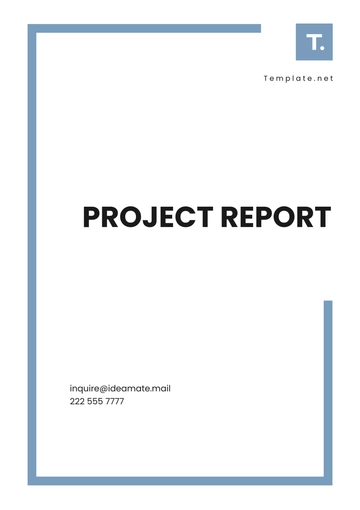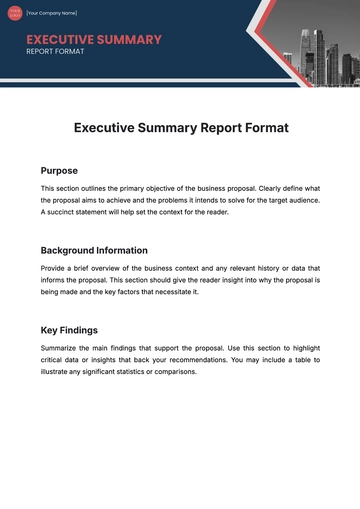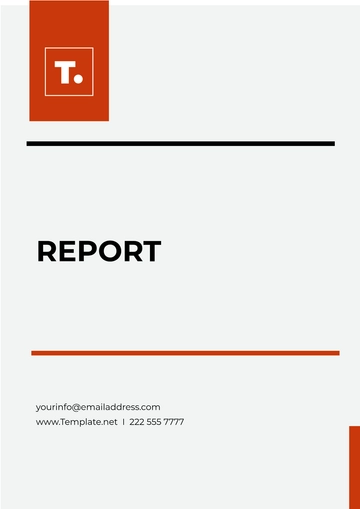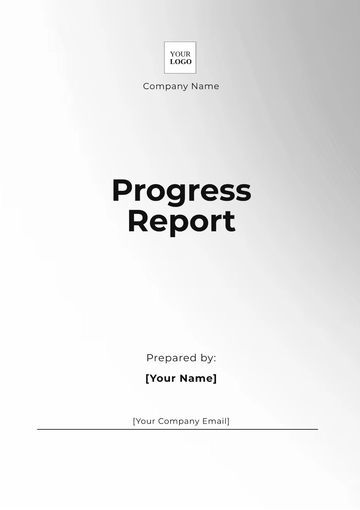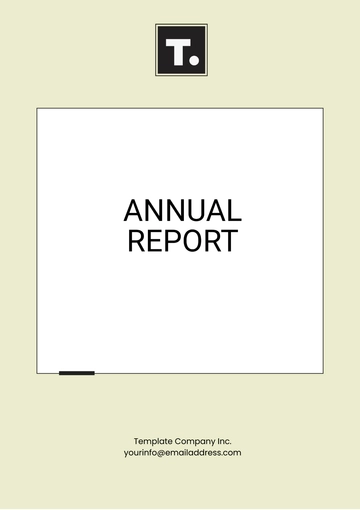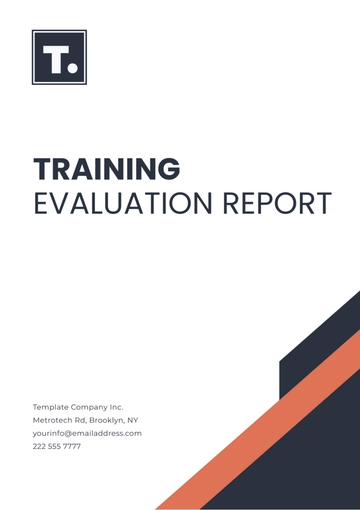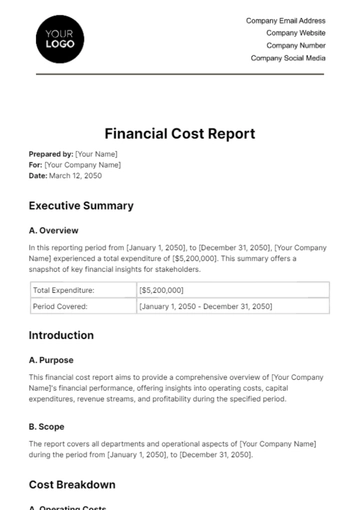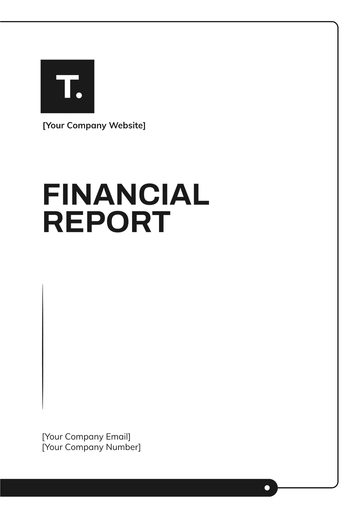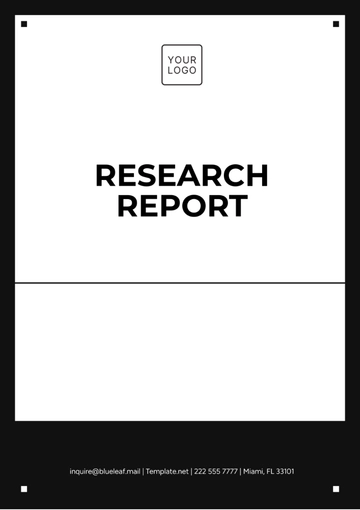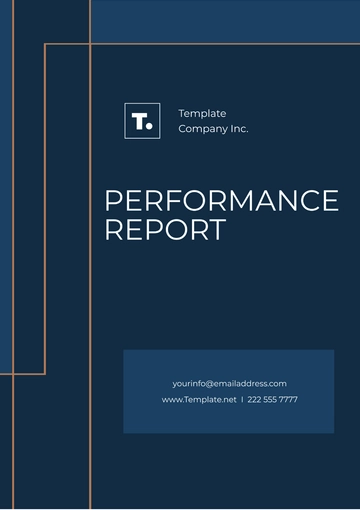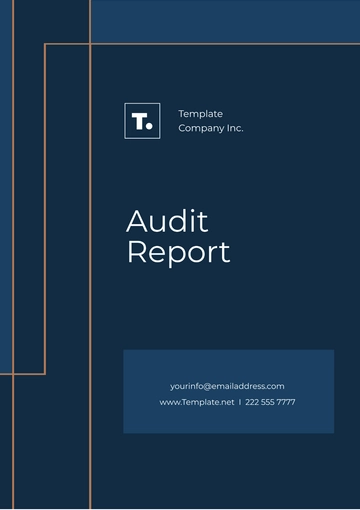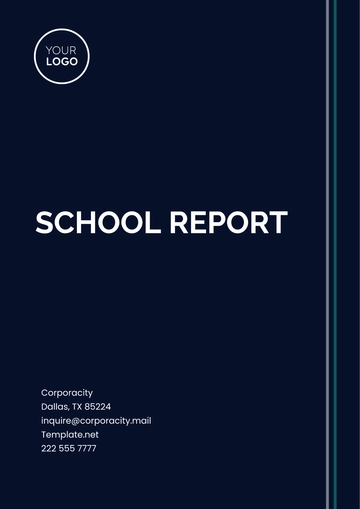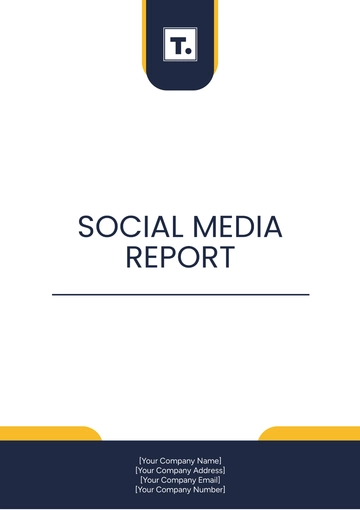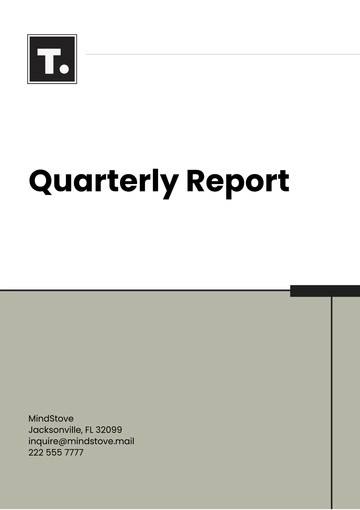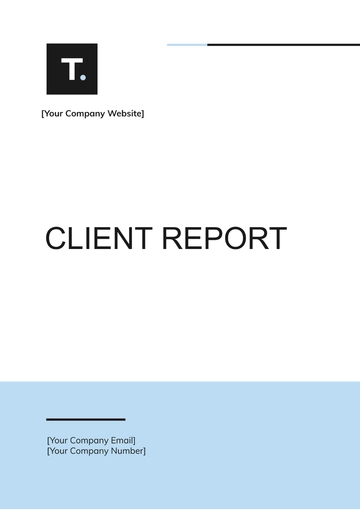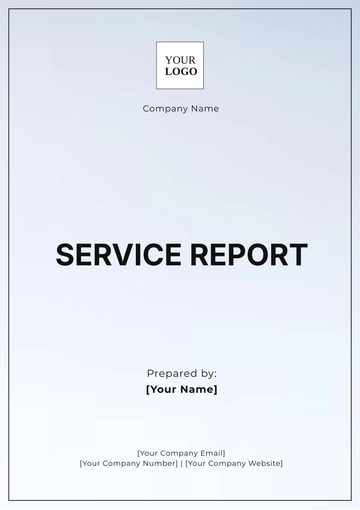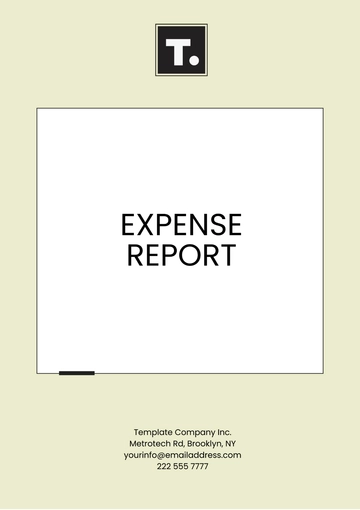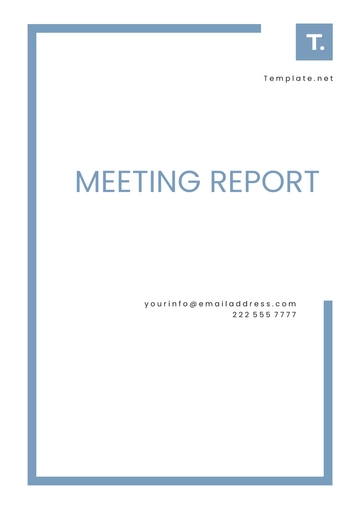Free Monthly Financial Management Report
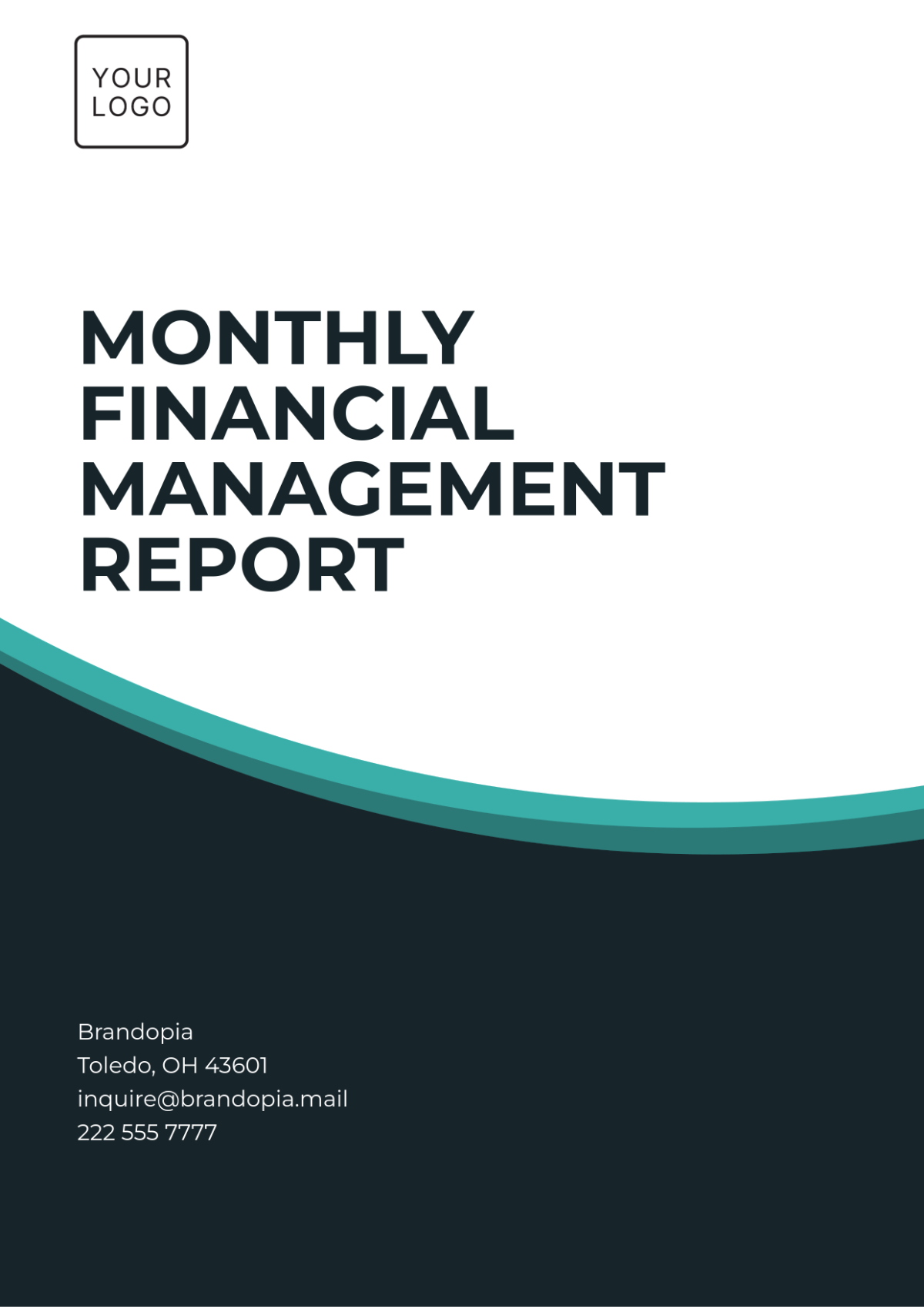
Date: [DATE]
Prepared by: [YOUR NAME]
Company: [YOUR COMPANY NAME]
I. Executive Summary
The monthly financial management report provides a detailed overview of the company's financial status. This includes a summary of income, expenses, cash flow, and key financial ratios. The report aims to offer insights into the financial health of the company and guide strategic decision-making.
A. Income Overview
The total income for the month of September was $500,000, which represents an increase of 10% compared to August. This improvement was driven by a surge in product sales and new client acquisitions.
B. Expense Overview
Total expenses amounted to $350,000 in September, which is a 5% decrease from the previous month. This reduction in expenses is primarily due to cost-cutting measures implemented across various departments.
C. Net Profit
The net profit for September stood at $150,000, translating to a net profit margin of 30%. This is a significant improvement from the 25% margin reported in August.
II. Detailed Financial Analysis
A. Revenue Breakdown
The following table illustrates the revenue breakdown across different business segments:
Segment | Revenue ($) | Percentage of Total Revenue |
|---|---|---|
Product Sales | 300,000 | 60% |
Service Revenue | 150,000 | 30% |
Other Income | 50,000 | 10% |
B. Expense Breakdown
Below is the detailed breakdown of expenses for September:
Expense Category | Amount ($) | Percentage of Total Expenses |
|---|---|---|
Salaries and Wages | 120,000 | 34.3% |
Rent and Utilities | 50,000 | 14.3% |
Marketing | 40,000 | 11.4% |
Research and Development | 30,000 | 8.6% |
Other Expenses | 110,000 | 31.4% |
C. Key Financial Ratios
The key financial ratios for September are as follows:
Current Ratio: 1.5
Quick Ratio: 1.2
Debt-to-Equity Ratio: 0.8
Return on Assets (ROA): 10%
Return on Equity (ROE): 15%
III. Cash Flow Statement
The cash flow statement for September reflects the company’s ability to generate cash and manage its liquidity effectively.
A. Operating Activities
Cash flow from operating activities was positive, with a net inflow of $80,000. This was primarily driven by increased sales and efficient receivables management.
B. Investing Activities
There was a net cash outflow of $40,000 from investing activities, attributed to the purchase of new equipment and technology investments.
C. Financing Activities
The company reported a net cash inflow of $20,000 from financing activities, mainly due to a short-term loan obtained to support working capital needs.
IV. Strategic Recommendations
Based on the financial analysis, the following recommendations are provided to enhance the company’s financial performance:
A. Cost Control
Operational efficiency can be improved further by:
Implementing stricter budget management practices.
Negotiating better terms with suppliers.
Investing in technology to automate routine tasks.
B. Revenue Growth
To drive revenue growth, consider the following strategies:
Expanding the product line to cater to a broader market.
Enhancing marketing efforts through targeted campaigns.
Exploring new geographical markets.
C. Enhancing Profit Margins
One way to enhance profit margins is to:
Introducing premium product lines with higher margins.
Optimizing the pricing strategy based on market demand.
Reducing production costs through process improvements.
V. Conclusion
September's financials are positive, with a 10% income boost to $500,000, a 5% drop in expenses, and a 30% profit margin. Product sales account for 60% of revenue. Salaries are a major cost, so managing expenses is key. Financial ratios indicate stable liquidity and efficient asset use. Strategic focus should be on cost control and revenue growth. Ongoing monitoring is necessary for sustained success.
- 100% Customizable, free editor
- Access 1 Million+ Templates, photo’s & graphics
- Download or share as a template
- Click and replace photos, graphics, text, backgrounds
- Resize, crop, AI write & more
- Access advanced editor
Elevate your financial oversight with the Monthly Financial Management Report Template, designed to streamline your budgeting and financial analysis. This customizable template allows you to tailor it to your specific needs, ensuring accuracy in tracking expenses and revenues. It's downloadable and printable, making it easy to share with your team or stakeholders. Plus, it's editable in our AI Editor Tool, giving you the flexibility to make real-time updates.
You may also like
- Sales Report
- Daily Report
- Project Report
- Business Report
- Weekly Report
- Incident Report
- Annual Report
- Report Layout
- Report Design
- Progress Report
- Marketing Report
- Company Report
- Monthly Report
- Audit Report
- Status Report
- School Report
- Reports Hr
- Management Report
- Project Status Report
- Handover Report
- Health And Safety Report
- Restaurant Report
- Construction Report
- Research Report
- Evaluation Report
- Investigation Report
- Employee Report
- Advertising Report
- Weekly Status Report
- Project Management Report
- Finance Report
- Service Report
- Technical Report
- Meeting Report
- Quarterly Report
- Inspection Report
- Medical Report
- Test Report
- Summary Report
- Inventory Report
- Valuation Report
- Operations Report
- Payroll Report
- Training Report
- Job Report
- Case Report
- Performance Report
- Board Report
- Internal Audit Report
- Student Report
- Monthly Management Report
- Small Business Report
- Accident Report
- Call Center Report
- Activity Report
- IT and Software Report
- Internship Report
- Visit Report
- Product Report
- Book Report
- Property Report
- Recruitment Report
- University Report
- Event Report
- SEO Report
- Conference Report
- Narrative Report
- Nursing Home Report
- Preschool Report
- Call Report
- Customer Report
- Employee Incident Report
- Accomplishment Report
- Social Media Report
- Work From Home Report
- Security Report
- Damage Report
- Quality Report
- Internal Report
- Nurse Report
- Real Estate Report
- Hotel Report
- Equipment Report
- Credit Report
- Field Report
- Non Profit Report
- Maintenance Report
- News Report
- Survey Report
- Executive Report
- Law Firm Report
- Advertising Agency Report
- Interior Design Report
- Travel Agency Report
- Stock Report
- Salon Report
- Bug Report
- Workplace Report
- Action Report
- Investor Report
- Cleaning Services Report
- Consulting Report
- Freelancer Report
- Site Visit Report
- Trip Report
- Classroom Observation Report
- Vehicle Report
- Final Report
- Software Report


